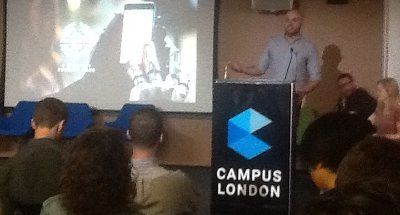Ronching blue or stummy beige? —
An AI invented a bunch of new paint colors that are hilariously wrong.
Let’s just say this neural network won’t make you fear the robot uprising.

Tabby’s star, famous for its inexplicable dips in brightness, is going through one of those dips right now.
A type of food that has been around for centuries, but is primed to be increasingly relevant to the future: Plant-Based “Meat.”
In this video series, the Galactic Public Archives takes bite-sized looks at a variety of terms, technologies, and ideas that are likely to be prominent in the future. Terms are regularly changing and being redefined with the passing of time. With constant breakthroughs and the development of new technology and other resources, we seek to define what these things are and how they will impact our future.

The U.S. Air Force Research Laboratories and Lockheed Martin have demonstrated a mixed formation of manned and unmanned F-16s in a simulated combat environment.
The Have Raider demonstration at Edwards Air Force Base in California included two phases, Lockheed announced on April 10, 2017. The first phase, Have Raider I, focused on formation-flying. Have Raider II sent the pilotless F-16 on a mock bombing run through “dynamic” enemy defenses.
“This demonstration is an important milestone in AFRL’s maturation of technologies needed to integrate manned and unmanned aircraft in a strike package,” Capt. Andrew Petry, an AFRL engineer, said in a Lockheed press release.

“A hackathon (also known as a hack day, hackfest or codefest) is a design sprint-like event in which computer programmers and others involved in software development, including graphic designers, interface designers, project managers, and others, often including subject-matter-experts, collaborate intensively on software projects. Occasionally, there is a hardware component as well. Hackathons typically last between a day and a week. Some hackathons are intended simply for educational or social purposes, although in many cases the goal is to create usable software.” https://en.wikipedia.org/wiki/Hackathon
In February 2014, Dr. Brian May, astrophysicist and famed guitarist for the rock band QUEEN, began working with Grigorij Richters, the director of a new film titled 51 Degrees North, a fictional story of an asteroid impact on London and the resulting human condition. May composed the music for the film and suggested that Richters preview it at Starmus, an event organized by Dr. Garik Israelian and attended by esteemed astrophysicists, scientists and artists, including Dr. Stephen Hawking, Richard Dawkins and Rick Wakeman. The result was the beginning of discussions that would lead to the launch of Asteroid Day in 2015. See : https://asteroidday.org/
This is how they dig subway tunnels.


My event starts at 4:30PM and is at: Carolina Theatre, Cinema 1 309 W Morgan St, Durham, NC 27701 The Immortality Bus, despite controversy and resistance from some transhumanists, defied many odds and has become one of the widely discussed pieces of art and events in the futurist world. Come watch never before seen slides on how the bus, science activism, and my presidential campaign made its way across America and delivered the Transhumanist Bill of Rights to the US Capitol. http://sched.co/AGbE & https://moogfest2017.sched.com/artist/info6094
Artificial intelligence is already helping determine your future – whether it’s your Netflix viewing preferences, your suitability for a mortgage or your compatibility with a prospective employer. But can we agree, at least for now, that having an AI determine your guilt or innocence in a court of law is a step too far?
Worryingly, it seems this may already be happening. When American Chief Justice John Roberts recently attended an event, he was asked whether he could forsee a day “when smart machines, driven with artificial intelligences, will assist with courtroom fact finding or, more controversially even, judicial decision making”. He responded: “It’s a day that’s here and it’s putting a significant strain on how the judiciary goes about doing things”.
Roberts might have been referring to the recent case of Eric Loomis, who was sentenced to six years in prison at least in part by the recommendation of a private company’s secret proprietary software. Loomis, who has a criminal history and was sentenced for having fled the police in a stolen car, now asserts that his right to due process was violated as neither he nor his representatives were able to scrutinise or challenge the algorithm behind the recommendation.

Scientists have discovered a low-cost, efficient catalyst for splitting water to create hydrogen. This means that the world’s cleanest form of energy, hydrogen, may be more easily and cheaply produced.
Physicists at the University of Houston have discovered a low-cost, efficient, and easily available catalyst that can split water into hydrogen and oxygen. The catalyst is far more efficient than other options that have previously been employed, and because it is grown from ferrous metaphosphate on a conductive nickel foam platform, it is both more durable and cheaper to produce.